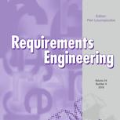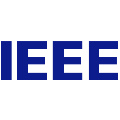[Context and Motivation] Several studies have investigated attributes of great software practitioners. However, the investigation of such attributes is still missing in Requirements Engineering (RE). The current knowledge on attributes of great software practitioners might not be easily translated to the context of RE because its activities are, usually, less technical and more human-centered than other software engineering activities. [Question/Problem] This work aims to investigate which are the attributes of great requirements engineers, the relationship between them, and strategies that can be employed to obtain these attributes. We follow a method composed of a survey with 18 practitioners and follow up interviews with 11 of them. [Principal Ideas/Results] Investigative ability in talking to stakeholders, judicious, and understand the business are the most commonly mentioned attributes amongst the set of 22 attributes identified, which were grouped into four categories. We also found 38 strategies to improve RE skills. Examples are training, talking to all stakeholders, and acquiring domain knowledge. [Contribution] The attributes, their categories, and relationships are organized into a map. The relations between attributes and strategies are represented in a Sankey diagram. Software practitioners can use our findings to improve their understanding about the role and responsibilities of requirements engineers.
相關內容
We investigate some previously unexplored (or underexplored) computational aspects of total variation (TV) distance. First, we give a simple deterministic polynomial-time algorithm for checking equivalence between mixtures of product distributions, over arbitrary alphabets. This corresponds to a special case, whereby the TV distance between the two distributions is zero. Second, we prove that unless $\mathsf{NP} \subseteq \mathsf{RP}$, it is impossible to efficiently estimate the TV distance between arbitrary Ising models, even in a bounded-error randomized setting.
Middleware, third-party software intermediaries between users and platforms, has been broached as a means to decentralize the power of social media platforms and enhance user agency. Middleware may enable a more user-centric and democratic approach to shaping digital experiences, offering a flexible architecture as an alternative to both centrally controlled, opaque platforms and an unmoderated, uncurated internet. The widespread adoption of open middleware has long hinged on the cooperation of established major platforms; however, the recent growth of federated platforms, such as Mastodon and Bluesky, has led to increased offerings and user awareness. In this report we consider the potential of middleware as a means of enabling greater user control over curation and moderation - two aspects of the social media experience that are often mired in controversy. We evaluate the trade-offs and negative externalities it might create, and discuss the technological, regulatory, and market dynamics that could either support or hinder its implementation.
The development and evaluation of Large Language Models (LLMs) has primarily focused on their task-solving capabilities, with recent models even surpassing human performance in some areas. However, this focus often neglects whether machine-generated language matches the human level of diversity, in terms of vocabulary choice, syntactic construction, and expression of meaning, raising questions about whether the fundamentals of language generation have been fully addressed. This paper emphasizes the importance of examining the preservation of human linguistic richness by language models, given the concerning surge in online content produced or aided by LLMs. We propose a comprehensive framework for evaluating LLMs from various linguistic diversity perspectives including lexical, syntactic, and semantic dimensions. Using this framework, we benchmark several state-of-the-art LLMs across all diversity dimensions, and conduct an in-depth case study for syntactic diversity. Finally, we analyze how different development and deployment choices impact the linguistic diversity of LLM outputs.
Answer Set Programming (ASP), a well-known declarative logic programming paradigm, has recently found practical application in Process Mining. In particular, ASP has been used to model tasks involving declarative specifications of business processes. In this area, Declare stands out as the most widely adopted declarative process modeling language, offering a means to model processes through sets of constraints valid traces must satisfy, that can be expressed in Linear Temporal Logic over Finite Traces (LTLf). Existing ASP-based solutions encode Declare constraints by modeling the corresponding LTLf formula or its equivalent automaton which can be obtained using established techniques. In this paper, we introduce a novel encoding for Declare constraints that directly models their semantics as ASP rules, eliminating the need for intermediate representations. We assess the effectiveness of this novel approach on two Process Mining tasks by comparing it with alternative ASP encodings and a Python library for Declare. Under consideration in Theory and Practice of Logic Programming (TPLP).
With the rapid development of artificial intelligence, robotics, and Internet of Things, multi-robot systems are progressively acquiring human-like environmental perception and understanding capabilities, empowering them to complete complex tasks through autonomous decision-making and interaction. However, the Internet of Robotic Things (IoRT) faces significant challenges in terms of spectrum resources, sensing accuracy, communication latency, and energy supply. To address these issues, a reconfigurable intelligent surface (RIS)-aided IoRT network is proposed to enhance the overall performance of robotic communication, sensing, computation, and energy harvesting. In the case studies, by jointly optimizing parameters such as transceiver beamforming, robot trajectories, and RIS coefficients, solutions based on multi-agent deep reinforcement learning and multi-objective optimization are proposed to solve problems such as beamforming design, path planning, target sensing, and data aggregation. Numerical results are provided to demonstrate the effectiveness of proposed solutions in improve communication quality, sensing accuracy, computation error, and energy efficiency of RIS-aided IoRT networks.
Intersectional fairness is a critical requirement for Machine Learning (ML) software, demanding fairness across subgroups defined by multiple protected attributes. This paper introduces FairHOME, a novel ensemble approach using higher order mutation of inputs to enhance intersectional fairness of ML software during the inference phase. Inspired by social science theories highlighting the benefits of diversity, FairHOME generates mutants representing diverse subgroups for each input instance, thus broadening the array of perspectives to foster a fairer decision-making process. Unlike conventional ensemble methods that combine predictions made by different models, FairHOME combines predictions for the original input and its mutants, all generated by the same ML model, to reach a final decision. Notably, FairHOME is even applicable to deployed ML software as it bypasses the need for training new models. We extensively evaluate FairHOME against seven state-of-the-art fairness improvement methods across 24 decision-making tasks using widely adopted metrics. FairHOME consistently outperforms existing methods across all metrics considered. On average, it enhances intersectional fairness by 47.5%, surpassing the currently best-performing method by 9.6 percentage points.
There are now over 20 commercial vector database management systems (VDBMSs), all produced within the past five years. But embedding-based retrieval has been studied for over ten years, and similarity search a staggering half century and more. Driving this shift from algorithms to systems are new data intensive applications, notably large language models, that demand vast stores of unstructured data coupled with reliable, secure, fast, and scalable query processing capability. A variety of new data management techniques now exist for addressing these needs, however there is no comprehensive survey to thoroughly review these techniques and systems. We start by identifying five main obstacles to vector data management, namely vagueness of semantic similarity, large size of vectors, high cost of similarity comparison, lack of natural partitioning that can be used for indexing, and difficulty of efficiently answering hybrid queries that require both attributes and vectors. Overcoming these obstacles has led to new approaches to query processing, storage and indexing, and query optimization and execution. For query processing, a variety of similarity scores and query types are now well understood; for storage and indexing, techniques include vector compression, namely quantization, and partitioning based on randomization, learning partitioning, and navigable partitioning; for query optimization and execution, we describe new operators for hybrid queries, as well as techniques for plan enumeration, plan selection, and hardware accelerated execution. These techniques lead to a variety of VDBMSs across a spectrum of design and runtime characteristics, including native systems specialized for vectors and extended systems that incorporate vector capabilities into existing systems. We then discuss benchmarks, and finally we outline research challenges and point the direction for future work.
Learning on big data brings success for artificial intelligence (AI), but the annotation and training costs are expensive. In future, learning on small data is one of the ultimate purposes of AI, which requires machines to recognize objectives and scenarios relying on small data as humans. A series of machine learning models is going on this way such as active learning, few-shot learning, deep clustering. However, there are few theoretical guarantees for their generalization performance. Moreover, most of their settings are passive, that is, the label distribution is explicitly controlled by one specified sampling scenario. This survey follows the agnostic active sampling under a PAC (Probably Approximately Correct) framework to analyze the generalization error and label complexity of learning on small data using a supervised and unsupervised fashion. With these theoretical analyses, we categorize the small data learning models from two geometric perspectives: the Euclidean and non-Euclidean (hyperbolic) mean representation, where their optimization solutions are also presented and discussed. Later, some potential learning scenarios that may benefit from small data learning are then summarized, and their potential learning scenarios are also analyzed. Finally, some challenging applications such as computer vision, natural language processing that may benefit from learning on small data are also surveyed.
Deep neural networks (DNNs) are successful in many computer vision tasks. However, the most accurate DNNs require millions of parameters and operations, making them energy, computation and memory intensive. This impedes the deployment of large DNNs in low-power devices with limited compute resources. Recent research improves DNN models by reducing the memory requirement, energy consumption, and number of operations without significantly decreasing the accuracy. This paper surveys the progress of low-power deep learning and computer vision, specifically in regards to inference, and discusses the methods for compacting and accelerating DNN models. The techniques can be divided into four major categories: (1) parameter quantization and pruning, (2) compressed convolutional filters and matrix factorization, (3) network architecture search, and (4) knowledge distillation. We analyze the accuracy, advantages, disadvantages, and potential solutions to the problems with the techniques in each category. We also discuss new evaluation metrics as a guideline for future research.
Deep convolutional neural networks (CNNs) have recently achieved great success in many visual recognition tasks. However, existing deep neural network models are computationally expensive and memory intensive, hindering their deployment in devices with low memory resources or in applications with strict latency requirements. Therefore, a natural thought is to perform model compression and acceleration in deep networks without significantly decreasing the model performance. During the past few years, tremendous progress has been made in this area. In this paper, we survey the recent advanced techniques for compacting and accelerating CNNs model developed. These techniques are roughly categorized into four schemes: parameter pruning and sharing, low-rank factorization, transferred/compact convolutional filters, and knowledge distillation. Methods of parameter pruning and sharing will be described at the beginning, after that the other techniques will be introduced. For each scheme, we provide insightful analysis regarding the performance, related applications, advantages, and drawbacks etc. Then we will go through a few very recent additional successful methods, for example, dynamic capacity networks and stochastic depths networks. After that, we survey the evaluation matrix, the main datasets used for evaluating the model performance and recent benchmarking efforts. Finally, we conclude this paper, discuss remaining challenges and possible directions on this topic.





